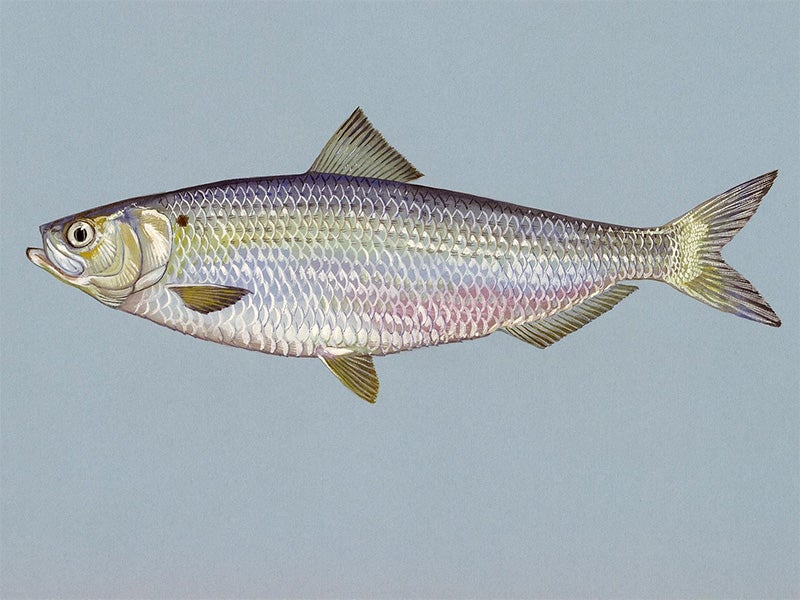Earthjustice, NRDC, Fishing & Watershed Groups File Notice to Sue for ESA Protection of Imperiled River Herring
The Endangered Species Act is clear. Given the imperiled status of blueback herring and the lack of sufficient action by regulators to stem the decline of river herring, a threatened designation for blueback herring is now necessary to jump start recovery.

This page was published 11 years ago. Find the latest on Earthjustice’s work.
River herring spend most of their lives in the Atlantic Ocean. They are anadromous fish species, which means they return to spawn in coastal rivers in the spring. But these small fish are in big trouble. Based on analysis by the National Marine Fisheries Service, their populations have declined more than 98 percent from their historic level.
River herring were once abundant from Nova Scotia all the way to Florida; however, they have been decimated by industrial fishing in the ocean, dams, water pollution, habitat destruction, and climate change. The Mid-Atlantic blueback river herring population is particularly imperiled and at risk of extinction.
In August 2011, our friends at the Natural Resources Defense Council submitted a petition to the National Marine Fisheries Service requesting that river herring be listed as a “threatened species,” and critical habitat be protected, under the federal Endangered Species Act. The petition made the case that river herring are “likely to become in danger of extinction within the foreseeable future throughout all or a significant portion of its range.”
On August 12, 2013, the Service published its determination that river herring do not warrant protection under the ESA despite population levels at less than two percent of the historical baseline and a host of threats identified by the scientists participating in the review. The agency provided an elaborate rationalization for its decision not to protect bluebacks either up and down the East Coast, or at least in the Mid-Atlantic region, that was based on a flawed reading of the law, flawed statistical analysis, and a failure to use the best available scientific information.
Particularly troubling is NMFS’s conclusion that even if all blueback herring in the Mid-Atlantic region go extinct, this loss would not be significant. This is based on the unsupportable assumption that other blueback herring from New England and Canada would quickly recolonize the area.
The Endangered Species Act is clear. Species must be declared “threatened” when that species is likely to become in danger of extinction and the decision must be made “solely on the basis of the best scientific and commercial data available.” Given the imperiled status of blueback herring and the lack of sufficient action by regulators to stem the decline of river herring, a threatened designation for blueback herring is now necessary to jump start recovery.
So this week, Earthjustice and our colleagues have sent a letter letting the agency know we plan to sue in 60 days over NMFS’s decision not to protect blueback herring.
Earthjustice is working with the Natural Resources Defense Council on the case, and representing the fishermen and conservationist groups that are members of the Anglers Conservation Network, Delaware River Shad Fishermen’s Association, Great Egg Harbor River Council, and Great Egg Harbor Watershed Association Trustees in the lawsuit.
Earthjustice’s Oceans Program uses the power of the law to safeguard imperiled marine life, reform fisheries management, stop the expansion of offshore oil and gas drilling, and increase the resiliency of ocean ecosystems to climate change.